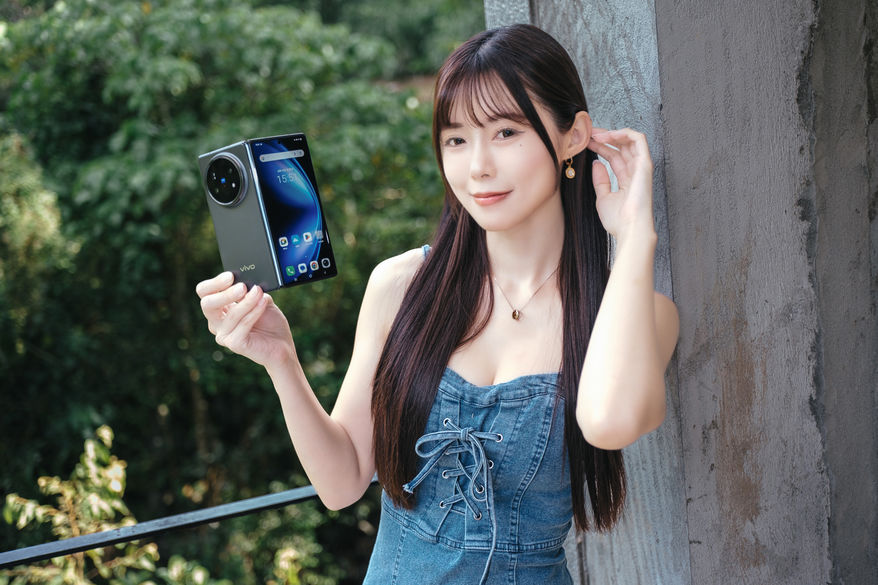Corning @ Sanford Bernstein Strategic Decisions Conf. 6/2
Wendell WeeksIn display, we just hosted the official opening ceremony for our Gen 10.5 facility in the city of Wuhan. This site is co-located with a large BOE plant, allowing Corning to deliver Gen 10.5 glass substrates directly to our customer for its production of large-sized display panels. The market for large-sized TVs is projected to grow at a double-digit CAGR through 2024. And Gen 10.5 glass provides the most economical approach for larger sets.
Jay Hunng
If we move from LCD to OLED. And going forward, there is already MiniLED, MicroLED and many, many new technologies in the pipeline. How do you think some of those future technologies will impact the glass demand in the production of those displays?
Wendell Weeks
Terrific. So it's so fascinating to talk about new display technologies. I think the first thing to realize is that just how stately of precession new technology is in display. New tech takes a very long time. And the reason is it's almost always the incumbent tech keeps getting better at a very fast rate. So God, it had to be first time 15 years ago, when folks started to ask me about OLED TV. And what I said is like, that's a great question. However, where we're going to place our bet is LCD TV will be a much better value for customers, and it will win that battle. And OLED TV will be -- they'll have a position, but it will be small.
And that's exactly what's happened. It doesn't mean that the question doesn't come up like all the time still. It does. But you can really understand the technology node well and deeply, planned for and attack it. If you just really take the time. So that's an example. The thing we liked in OLEDs was for handheld, especially for polyimide displays, because you could make them conform, you could make them bend. Now that's something LCD doesn't do well. So we were really interested in that. And so we placed our bet on the technology to enable that, and all of those displays are built on our proprietary substrate material. But by the way, uses more glass than traditional LCD because you build it on our modern material.
As we look forward, what we see is the most interesting technology is probably MicroLED. It's a beautiful technology. It's really cool. It's going to take a really long time, okay? A really long time. And -- but we've been investing in that space for, I don't know, God, it's almost be double-digit years. In a contained way, working with our key customers to see what can we do to solve the deep technical problems that are there. But we like it because once again, it's very different than LCD. In LCD, the economics are just so good. The pictures are just so good, right? And they've got so much runway that any new tech has to do something different. But the good news is it will be slow. Investors always ask, and I always feel like saying, like, there's nothing that's going to sneak up on anybody in display technology, right?
Universal Display @ Cowen TMT Conf. 6/1
Krish SankerThen just wanted to get your view on the technology side. Obviously, Apple introduced a mini-LED iPad, then there's people talk about micro LED down the road. Mean how do you look at those alternative technologies? Are they attacking a different segment of the market versus OLED? Or do you think eventually, all these technologies can peacefully coexist together?
Sidney Rosenblatt
Well, we are peacefully coexisting today with LCDs. LCDs are the market. And OLED mobile devices, we have 30-some percent of the market of the smartphone market. The rest is LCDs. When you go to a TV market of 240 million to 260 million units, there is going to be 7 million to 8 million OLED TVs sold, we're at 3% or 4% of the market. And for IT, it's even less.
So the display market is LCDs today. They have made multiple improvements in LCDs over the years. It's very mature technology. It used to be CCFL backlights, and then they went to side lights and LEDs. Now they're going to many LEDs it is just another technology improvement to liquid crystal displays. It is not its own technology. It's just making LCDs better and more costly, to be perfectly honest. There is 80 LCD fabs in the world. They're not going to go away overnight, and they are going to be the competition for foreseeable future.
Micro LEDs are something different. Micro LEDs, we've heard about micro LEDs that Apple was going to put them in their Apple watch, I guess, in 2015 because they bought a company called LuxVue in Taiwan and going to put OLEDs out of business. Well, they haven't had a micro LED Apple watch yet. And the folks that are in the business, say, it's a number of years away. These are self emissive LEDs and you put red, green and blue. So it is a competition to OLEDS. But I think pretty much the industry feels it's for very small and very large when and if it can be commercialized.
看看之後新聞會怎麼寫,我猜應該會擇時來報,如果今天就用掉是不是有點可惜?
LCD Supply Demand Shifting to Oversupply
大型LCD需給反転と加熱するLCD投資
今天的新聞流,看看明天會不會好一點

Q: Area shipment to be up by low single digit % QoQ

P: Blended ASP (USD/square meter) to be up by low teens % QoQ
Apr-May21 company blended ASP is around 12.5% higher than that of 1Q21. If that number is sustained at current level for this month, ASP QoQ is likely to be higher than 12.5%.
不過現在的焦點都是報價跟供需。Forward looking. right.

唯一的娜烏西卡 wrote:
Area shipment to be up by low single digit % QoQ
1. 友達每一季法說會都會提供下一季的 "ASP" 和 "出貨面積" 預估, 且每一個月初,都會公布前月"實際出貨面積".
2. 生產線每個月都24小時滿載生產, 友達每月最大產能約 220萬平方米. 每季最大產能約 650~660萬平方米.全年總出貨面積約 2600萬平方米, 這個數字每月每季每年都會差不多.
友達面積產能固定的情況下,上半年都會技術性預留一些存貨,到 Q3 旺季才會拉出來賣.所以,"出貨面積"會作季節性調整,每季不同,淡旺季有落差.
----------------------------------------
照公司最近一次法說會的預測,Area shipment to be up by low single digit % QoQ
代表, Q2出貨面積可能會季增 3%,來到 654.6萬平方米, 換句話說, 6月出貨面積會大增到 234.2萬平方米, 營收暴增至 358億. 破近 6年紀錄.
友達在2013年 3月 營收高峰是 380億, 這個歷史紀錄要等今年 9月才有機會超越.
------------------------------------------
(附註) 營收計算公式如何使用
月營收 = ASP x 出貨面積 + 其他非面板業務收入(預估每月約25億台幣)
5月ASP 已經高達 495美金,6月 ASP 可能月增 2.5%,來到 507美金.
月營收 = 507美金 x 234.2萬平方米 x 匯率單位轉換 + 25億 = 357.5億台幣
今日大盤延續昨日的節奏,開平後隨即震盪向下,收跌0.64%,量能較前一日增加,但尚不足4千億。資金集中於電子、運輸但弱勢。外資已連四日淨流出。技術面快成織布機,現階段的架構讓參與者一看就意興闌珊,近期大概為盤整量縮的型態。
面板三喵本日皆弱勢,呈現三喵糾纏。友達、彩晶昨日報業績,但今日都開的不慍不火,十一點二十之前在平盤上下游走,與大盤相關不高。十一點二十後開始與大盤同步,出量且具方向性資金流讓股價一路下殺,最終友達以最低價之上一檔作收,跌4.02%。成交量較前一日增加近七成。昨天的答案是電梯向下。友達ADR今日大概就是小怒神了。
技術面,今日收季線之下、月線之上,KD死叉後下彎,尚在20上中布林通道中間,多條均線將糾結。
籌碼面依然惡劣,外資賣超近38,000張,投信賣超1,000多張,自營商賣超5,700多張。
綜觀環球面板股,近一個月大多弱勢。業績好但下跌,有人會說已反應(price in),也就是全世界都知道友達第二季營收大概940億以上,當季每股大概至少賺2塊,然後全年再不濟可能都是5塊以上(這些數字只是假設)。 現在玩的是產業面的供需、報價...,只是消息面加工後的每則新聞看起來都像是鬼故事,影響市場情緒。目前不受參與者待見,滿正常的,因為參與者的只有面板循環崩崩的肌肉記憶。大家都能透過產業分析理解弱週期邏輯,但就是沒有人看過面板弱週期到底是個什麼樣。只能用時間來化解,其意思就是不論如何公司一定會體驗這個過程。作為參與者,不論是多空長短,都是為了透過這個過程與結果在二級市場獲利。目前尚未見到有意願以一級市場方式獲利的參與者。
今日大盤回神,開高後震盪一路向上收最高,上漲1.14%,量能與昨日相近,約4,100億。資金成交稍稍向電子類股傾斜,比重約五成。技術面來說,指數虎軀一震站回所有均線之上,稍稍舒緩落入織布機之疑慮。單就線圖來說,顯然要比昨天有趣,猛一看似有戲,若能維持動能,不久KD將高檔金叉進入鈍化。外資今日終結連四賣反手轉買161億。
受消息面影響,面板三喵本日延續昨日的弱勢,友達、群創雙喵糾纏,雙雙下跌5%上下,而彩晶情況好一點,但也下跌近2.5%。友達今日稍稍開高,隨即受到花旗環球降評的影響而轉弱,十點半前跌約3%,在十點半後至十二點半之間,波動與大盤同步,此波賣壓再將股價下拉2個百分點。雖然十二點半過後樂觀買盤讓大盤一路衝高,但此時面板買盤情緒已潰散,今日已無力回天,友達下跌4.61%作收。成交量稍稍放大超10%。友達ADR今日小怒神連發。
技術面,今日收在月線之下,離下方支撐之年線、下布林尚有10%多一點。
資金面,三法齊賣,外資/投信/自營 分別賣出 6,055/26,920/4,769張
昨天提到price in,跟它一體兩面的是forward looking,也就是市場看的是未來。預測是一回事,而預測會不會實現是一回事。市場對券商的預測與降評作出反應,時間自然會驗證這些預測,如果預測沒實現,券商就再作一個預測與升評就好了。多空長短都有利可圖。關注焦點不外乎就是供需、未來報價。需求沒人抓得準;至於供給,產量是基於產能與產銷政策。多空的一個賭點在於行業競爭態勢與產銷政策是否已發生結構性改變。

 ...不過整年度看起來還是不錯的...
...不過整年度看起來還是不錯的...


































































































